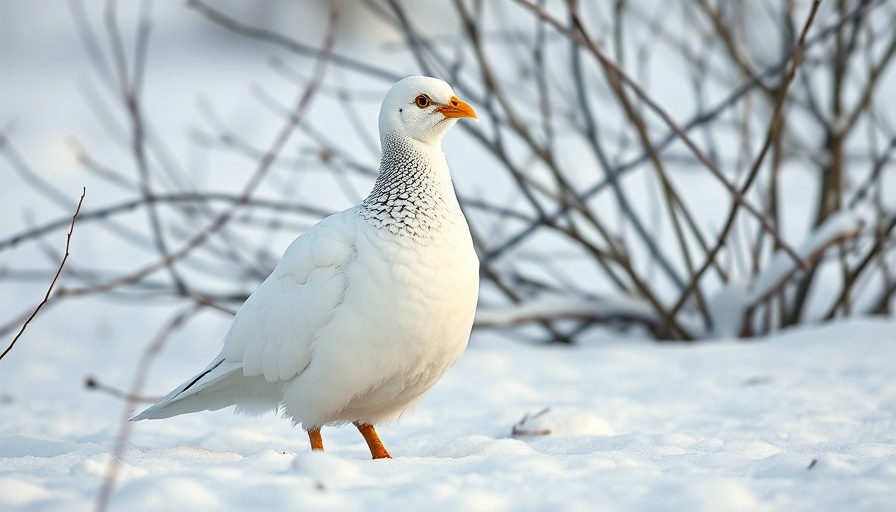
Discovering the Wonderland of the Willow Ptarmigan
With winter just around the corner, few birds capture the imagination quite like the willow ptarmigan. Known for its striking transformation from mottled brown to a cloak of snowy-white, the ptarmigan is a true marvel of adaptation. This change not only makes it challenging for predators to spot, but its unique physical adaptations are what allow it to thrive in some of the planet's coldest, snowiest environments.
Unique Winter Adaptations
The most fascinating aspect of the willow ptarmigan lies in how it prepares for winter. As temperatures drop and snow blankets its habitat, the ptarmigan's feet undergo remarkable changes. Unlike many birds that would struggle in snowy conditions, the ptarmigan develops feathered feet that act much like snowshoes, allowing it to travel freely over deep snow without sinking. This adaptation is essential for foraging and escaping predators.
The Significance of the Name: Lagopus
The name "Lagopus" comes from the Greek words for 'foot' and 'hare,' drawing a parallel between ptarmigans and similarly well-adapted creatures like the snowshoe hare. This nomenclature reflects the remarkable evolutionary traits both species share—namely, adaptations suited to a life in the snow.
Conclusion: The Resilience of Nature
The willow ptarmigan exemplifies how nature equips its creations with ingenious tools for survival. Understanding the unique adaptations of this stunning bird not only enriches our appreciation of wildlife but also emphasizes the delicate balance of ecological systems. Next time you encounter a ptarmigan or even just the winter landscape it thrives in, take a moment to reflect on this little marvel of nature.
 Add Row
Add Row  Add
Add 




 Add Row
Add Row  Add
Add 

Write A Comment